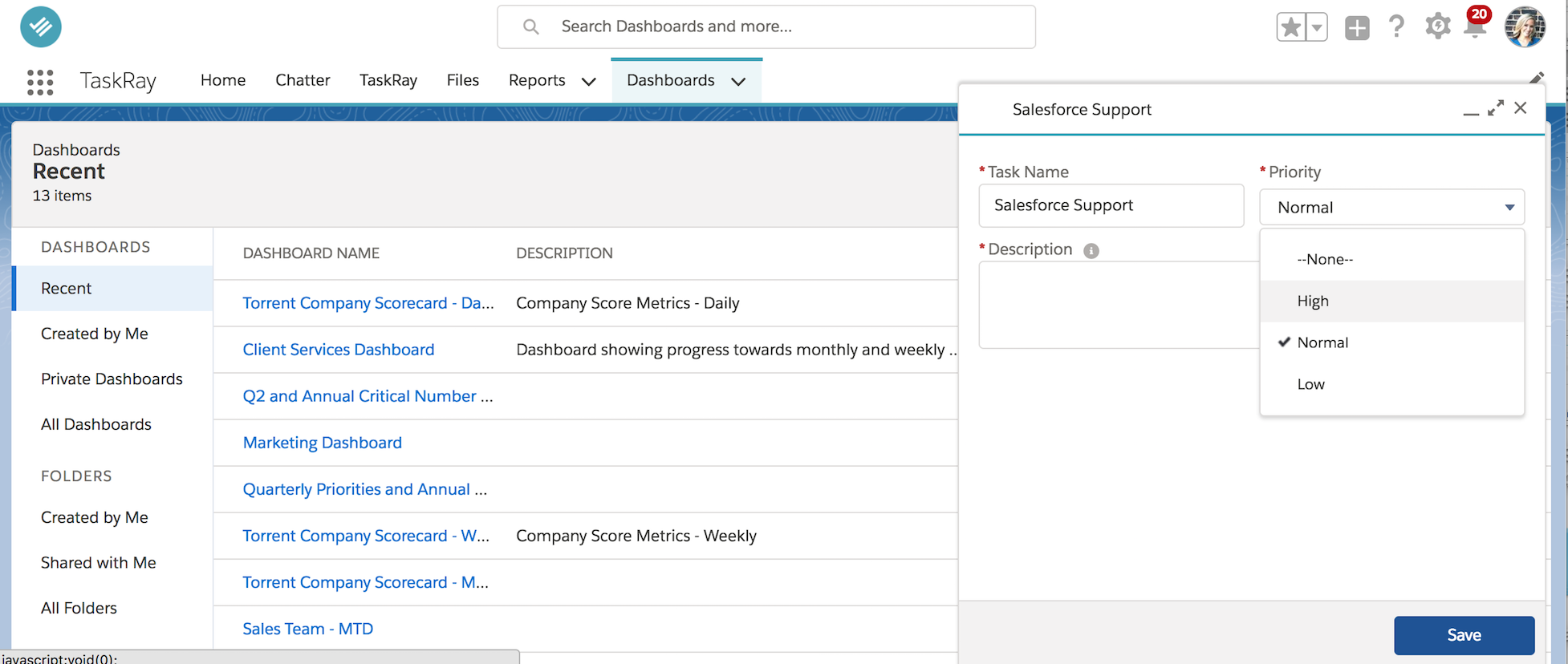When I’m not writing illuminating, scintillating and breathtaking blog posts, I also work as Torrent’s internal Salesforce admin.
And for the record, yes, being an admin for a company of Salesforce consultants can be exactly as demanding as it sounds. My colleagues understand the power of the platform, so they aren’t afraid to ask for the furthest extent of what’s possible.
This dynamic is difficult to manage without a defined Salesforce user support process, and we didn’t have one. It was a nightmare to keep track of all of our outstanding tasks. However, one conversation with our CEO (a former Salesforce consultant himself) sparked an idea to transform our support process and eliminate the stress our old system caused.
Here’s the story of how we used TaskRay, a project management solution, to transform our Salesforce user support process — and how it’s entirely revitalized my productivity.
A Scattered Salesforce User Support Process
I wasn’t getting anything done.
Without a defined internal support process, requests came to our team through a variety of channels: walk-ups, Google Hangouts, Salesforce Chatter, etc. The flurry of constant notifications kept me from concentrating on any one task. A hurricane of pings, buzzes and shifting priorities surrounded and paralyzed me.
And with so many requests spread across multiple channels, I always worried about letting action items fall through the cracks. I already used TaskRay (more on that later) for more complicated requests but often tried to resolve smaller issues immediately without logging them anywhere. So I typically found myself relying on my memory to track the status of multiple tasks.
Stress ruled my work. I felt scattered. My productivity — especially in a split role — lay in tatters, so each night I worked later and later just to catch up. I couldn’t survive in that type of environment for long, and that’s when my CEO and I identified a need to change our process.
{{cta('dd520b46-cd82-47d2-94af-54a7f3f90f31')}}
A Defined Salesforce User Support Process
After talking with our CEO, I mapped out a new methodology and built it in an hour. My solution: to create a simple form that any user could submit from any page in Salesforce, and to design the form to send every request to the same place and same group of users (my team).

A new Salesforce global quick action solved my use case perfectly: The action I built automatically creates a TaskRay task for each request, and from there a Salesforce process assigns it to an internal support queue and sorts it into a staging TaskRay project reserved for new submissions.
Now, instead of perpetually managing requests from a variety of channels, we have a standardized pool of tasks that I triage regularly — at times that don’t conflict with my other work. As I triage issues, I immediately sort them out of the staging project. The queue system makes the process scalable. The staging area for new requests ensures that I see each one and avoid losing anything in my backlog.
Admittedly, this process could exist without TaskRay. I could have designed our new Salesforce user support process to create standard Salesforce tasks, cases or records of a custom object. But TaskRay’s user-friendly project management platform makes it easy to sort, triage and re-assign action items visually. Its native Salesforce app allows me to quickly filter my tasks and track the status of a single request or an entire project. With it, I can effectively manage complex projects consisting of dozens of steps, without fear of letting one slip through the cracks.
The Result: Better Support, Hours Saved
Since being rolled out to our company, this process has made a marked difference in how our internal support team approaches our work. We are now better equipped to handle complex requests faster, as we can focus on them without fear of distraction.
It has also saved us hours of work each week that was previously spent logging new requests into TaskRay, tracking down old communications and juggling multiple support conversations. TaskRay gives us a unified repository of outstanding tasks, while each request record houses the complete communication history about it.
Our ability to prioritize, delegate and plan out our work has improved significantly, all thanks to our new Salesforce user support process and TaskRay.
So, if your support teams struggle with problems similar to those we faced — constant requests and questions from a variety of places, fear of losing tasks, lack of process — you may want to consider a change. A different support process or management tool could help your team as much as our change helped ours.
And if you’re still struggling to keep up with all of your users' questions and requests, you may want to consider outside help. If you think some assistance could set you on the right track, check out our free eBook: 9 Signs You Need a Salesforce Consulting Firm.



